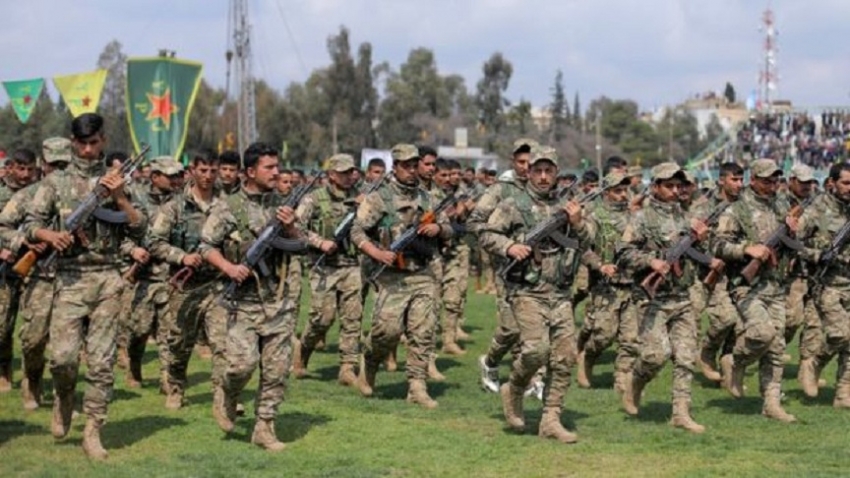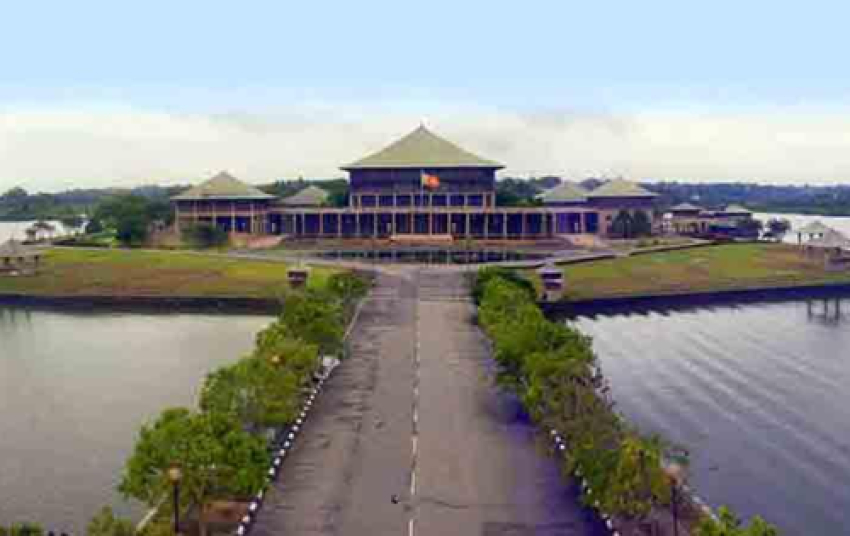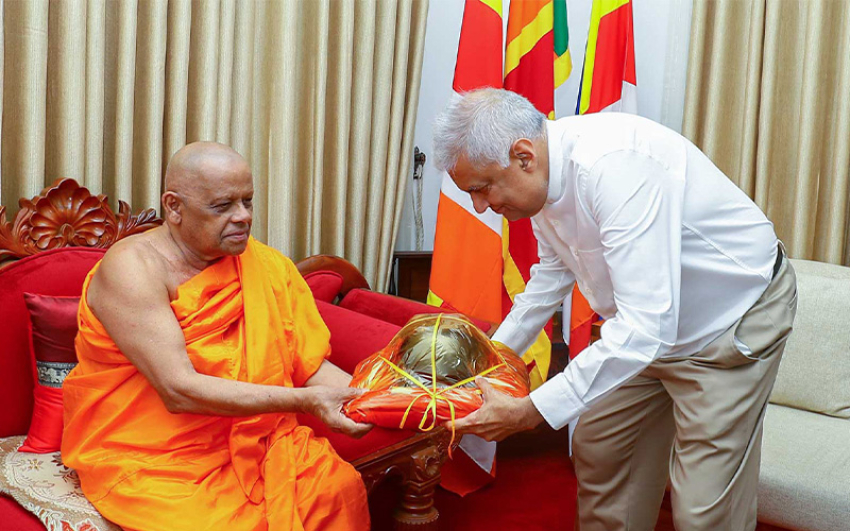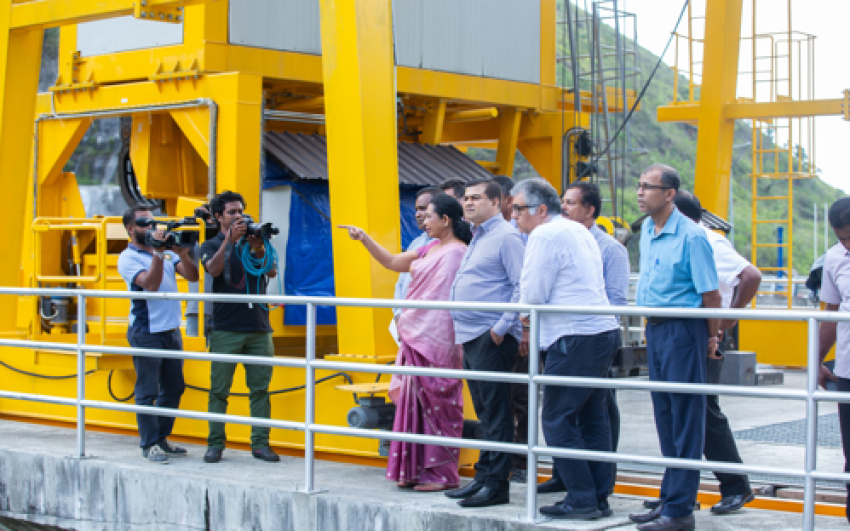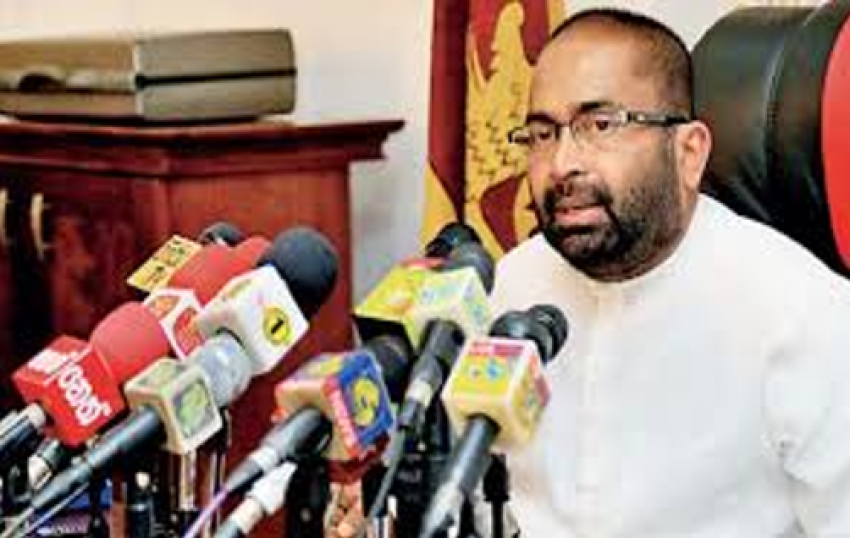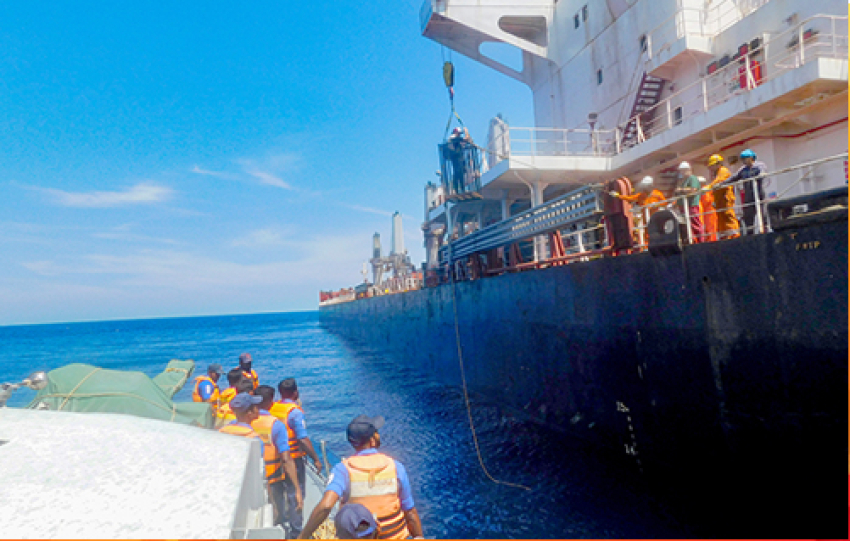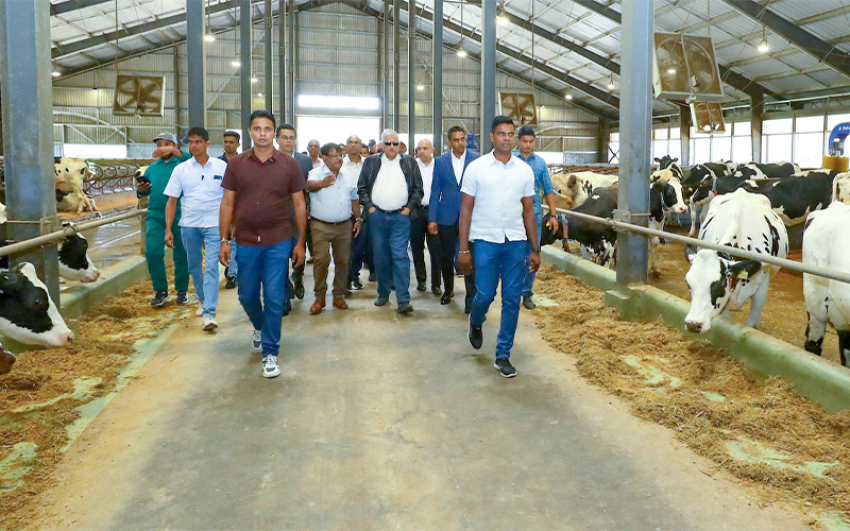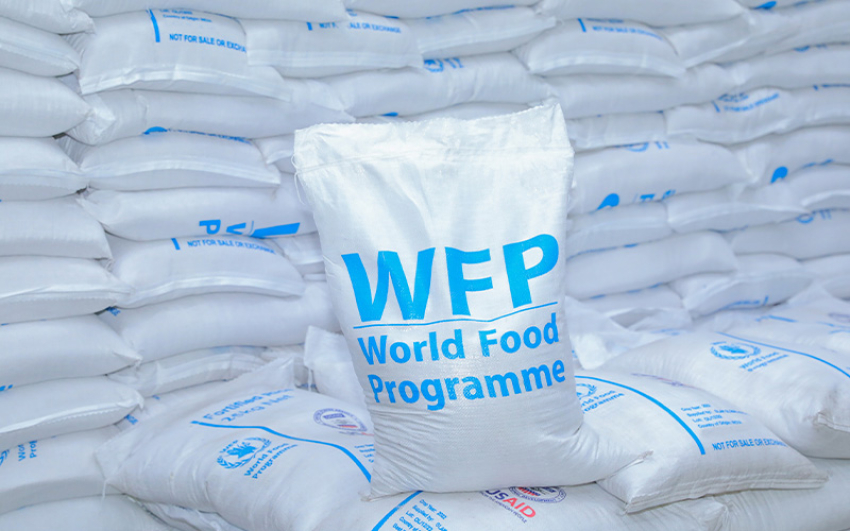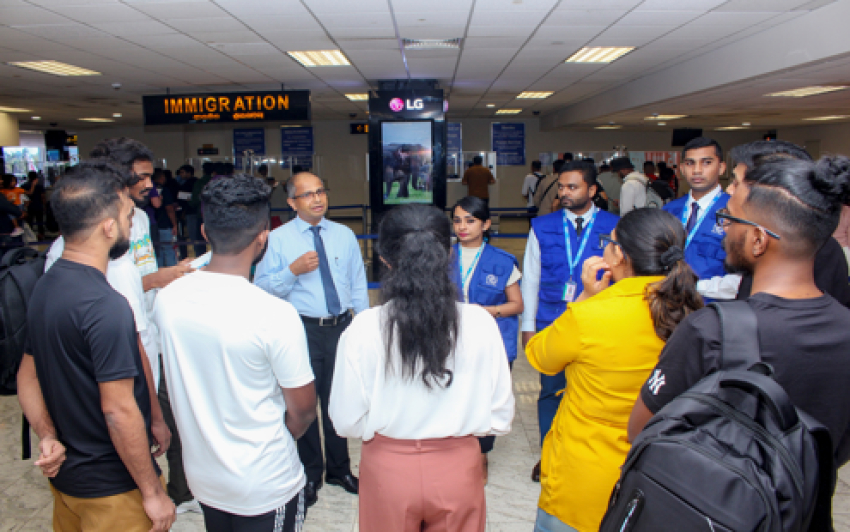Turkey has launched an offensive against territory held by Kurdish-led forces in northern SyriaUS Secretary of State Mike Pompeo has denied the US gave Turkey a "green light" for its offensive in Syria.Mr Pompeo defended President Donald Trump's widely criticised decision to withdraw US troops from the northern border area.Turkey on Wednesday launched an assault on territory held by Kurdish-led forces - key allies of the US in the region.President Recep Tayyip Erdogan said the aim was to "prevent the creation of a terror corridor" on the border.Turkey said its plan was to create a "safe zone" cleared of Kurdish militias which will also house Syrian refugees.
ut critics say the operation could lead to ethnic cleansing of the local Kurdish population in northern Syria and a revival of the Islamic State (IS) militant group.Kurdish-led forces vowed to resist the offensive and have already clashed with Turkish troops.The Kurds - who helped defeat IS in Syria and were key US allies in that fight - guard thousands of IS fighters and their relatives in prisons and camps in areas under their control. It is unclear whether they will continue to do so if battles break out.The US military says it has taken custody of two British detainees notorious for their roles in an IS cell that tortured and killed nearly 30 Western hostages.
The two men, El Shafee Elsheikh and Alexanda Kotey, were part of a British cell nicknamed The Beatles.They have now been removed from a prison run by the Kurdish-led militia in northern Syria.
In an interview with US broadcaster PBS, Mr Pompeo defended Mr Trump's surprise decision to pull back US forces, adding that Turkey had a "legitimate security concern" and "a terrorist threat to their south".He said reports the US had allowed Turkey to launch the offensive were "just false"."The United States didn't give Turkey a green light," he said.
In an earlier statement, Mr Trump - who had threatened to "obliterate" Turkey's economy if it went "off limits" - said the US did not "endorse this attack", calling the operation a "bad idea".The president later told a news conference the Turks and Kurds had "been fighting each other for centuries", and said that Kurdish fighters "didn't help us in the Second World War, they didn't help us with [the D-Day landings in] Normandy"."With all of that being said, we like the Kurds," Mr Trump added.
Even by President Trump's own remarkable standards his off-the-cuff remark that the US alliance with the Kurds is of little importance because they were not at Normandy, ie they did not fight with the US and its allies in World War Two, is extraordinary.For Mr Trump alliances are simply transactional - business arrangements to be judged according to a brutal and short-term cost benefit analysis. What is the US giving and what is it getting in return?
In seemingly writing off the Kurds he suggests that the US can easily find other allies in the region. Really? Has he already forgotten recent history? The Kurds were the only capable and reliable local ally in the struggle against IS.
But what will Mr Trump do about Turkey who, incidentally, were not at Normandy either? This is fast becoming a major test of Turkey's standing within Nato, with many fearing it has become a far from reliable ally of the West.
Republicans and Democrats alike have condemned the decision to pull back US troops.
Senator Lindsey Graham - normally a staunch ally of Mr Trump's - said the US had "shamefully abandoned" its ally, and has unveiled a sanctions bill against Turkey with Democratic Senator Chris Van Hollen.
"While the Administration refuses to act against Turkey, I expect strong bipartisan support," he wrote.
What is the latest in Syria?
Several towns and villages were hit by air strikes and artillery fire on Wednesday, forcing thousands of civilians to flee their homes.
The Kurdish Red Crescent said at least seven civilians had so far been killed, two of them children, and at least 19 more critically injured including four children.
Media captionSome residents began to flee as smoke rose over the border town of Ras al-Ain
Turkey's defence ministry later announced that Turkish troops and Syrian rebel allies had entered the area "east of the Euphrates".
Turkish armed forces tweeted they had struck 181 "terrorist" targets as part of what has been dubbed Operation Peace Spring, while a pro-Turkish group told AFP news agency the offensive had begun in Tal Abyad, an area under YPG control.
Reports suggested there were heavy clashes around the town. SDF spokesman Mustafa Bali said their forces had repelled a ground incursion there, and that there was "no advance as of now".
Kurdish authorities have called for a general mobilisation and urged people to "head to the border with Turkey... to resist in this sensitive, historic moment".
The SDF also said one of the prisons holding IS fighters had been hit by a Turkish air strike. And amid growing humanitarian concerns, it asked the US-led coalition against IS to establish a no-fly zone to stop "attacks on innocent people".
Turkey considers the Kurdish YPG militia - the dominant force in the Syrian Democratic Forces (SDF) - an extension of the banned Kurdistan Workers' Party, which has fought for Kurdish autonomy in Turkey for three decades.
The Turkish government plans to send two million of the 3.6 million Syrian refugees living on its soil to the "safe zone". The offensive could displace 300,000 people living the area, the International Rescue Committee said.
It was thought the offensive - Turkey's third military operation in northern Syria in three years - would initially focus on a 100km (62-mile) stretch between Tal Abyad and Ras al-Ain, a sparsely populated, mainly Arab area.
Mr Bali said the towns of Kobane, to the west, and Qamishli, to the east, had been hit by Turkish shelling. If Turkish troops advance towards those towns they will have to move into densely populated, mainly Kurdish areas.
What has the international reaction been?
The EU said it was "unlikely that a so-called 'safe zone'... would satisfy international criteria for refugee return", while Belgium, France, Germany, Poland and the UK all requested a meeting of the UN Security Council to discuss the move.
All 15 members of the body will meet on Thursday. The Arab League also announced an emergency meeting to discuss the offensive on 12 October in Cairo.
Nato Secretary General Jens Stoltenberg said Turkey, a Nato member, had "legitimate security concerns" but that he expected the country to "act with restraint and to ensure that any action... is proportionate and measured".
In his statement, Mr Trump also said Turkey would be responsible for ensuring that suspected IS fighters being held captive remained in prison and that IS did not regroup.
The SDF says it is detaining more than 12,000 suspected IS members in seven prisons, and at least 4,000 of them are foreign nationals. The exact locations have not been revealed, but some are reportedly close to the Turkish border.
Two camps - Roj and Ain Issa - holding families of suspected IS members are inside the "safe zone".
Turkey v Syria's Kurds: The short, medium and long story
Syria's Kurds reject Turkey's plans and say they will defend their territory at all costs
The Turkish military has launched a major cross-border operation in north-eastern Syria against a Kurdish-led militia alliance allied to the United States.The move came after US troops, who relied on the militia alliance to defeat the Islamic State (IS) group on the ground in Syria, withdrew from the border area.
One main reason: Turkey considers the biggest militia in the Kurdish-led alliance a terrorist group. It says it is an extension of a Kurdish rebel group fighting in Turkey.Turkey's president says its aim is to "destroy the terror corridor formed on our southern border" Turkey's president wants a 32km (20-mile) deep "safe zone" along the Syrian side of the border clear of Kurdish fighters. He also hopes to resettle up to 2 million Syrian refugees currently living in Turkey there. The Kurdish-led alliance says it will defend its territory. It accused the US of "leaving the area to turn into a war zone" and risking the re-emergence of IS.Turkey has vowed to push back from its border members of a Syrian Kurdish militia called the People's Protection Units (YPG).Turkish leaders view the YPG as an extension of the banned Kurdistan Workers' Party (PKK), which has fought for Kurdish autonomy in Turkey for three decades.
The Syrian Democratic Forces alliance led the fight against the Islamic State group in SyriaThe YPG dominates an alliance of Kurdish and Arab militias called the Syrian Democratic Forces (SDF), which has driven IS out of a quarter of Syria over the past four years with the help of air strikes by a US-led coalitionTurkey has carried out two cross-border offensives against the Kurdish forces.In early 2018, it attacked the Kurdish enclave of Afrin, in western Syria. Dozens of civilians were killed.
That December, with IS close to defeat, President Donald Trump said the US would begin withdrawing troops from Syria. When commanders and allies expressed concern about the fate of the Kurds, he proposed creating a "20-mile safe zone" along the border.
Mr Trump later suspended the withdrawal, but Turkish President Recep Erdogan continued pressing for a safe zone.
In August, the US and Turkey agreed to establish one together, but called it a "security mechanism". The YPG complied and began dismantling border fortifications.
Image copyrightREUTERS
Image caption
Recep Tayyip Erdogan and Donald Trump agree there should be a "safe zone" in northern Syria
But two months later, Mr Erdogan warned Mr Trump that Turkey was going to set up a safe zone alone.
Mr Trump said US troops would withdraw from the border area and that Turkey would be responsible for all IS militants detained by the SDF.
Mr Erdogan is confident his proposed 480km-long corridor will ensure Turkey's border security and become home to between 1 and 2 million Syrian refugees.
The SDF said it had been "stabbed in the back" by the US, and warned that a Turkish offensive would create a "permanent warzone" and reverse the defeat of IS.
Why is Turkey worried about Syria's Kurds?
It feels threatened by the People's Protection Units (YPG), the military wing of the Syrian Kurdish Democratic Union Party (PYD).
The Turkish government insists the YPG is an extension of the Kurdistan Workers' Party (PKK), which has fought for Kurdish autonomy in Turkey since 1984 and is designated as a terrorist group by the US and EU.
The YPG and PKK share a similar ideology, but they say they are separate entities.
Image copyrightREUTERS
Image caption
The People's Protection Units (YPG) militia is the dominant force in the SDF
The US also rejects Turkey's portrayal of the YPG, which has avoided taking sides in Syria's eight-year-old civil war but been a key ally of the West in the battle against IS.
The YPG is the dominant force in an alliance of Kurdish and Arab militias called the Syrian Democratic Forces (SDF). With the help of air strikes, weapons and advisers from a US-led multinational coalition, SDF fighters captured tens of thousands of square kilometres of territory in north-eastern Syria from IS.
An autonomous administration has been set up in the region, which is home to about 2 million civilians, 650,000 of whom have displaced by fighting elsewhere.
Is this Turkey's first cross-border operation?
Despite being part of the US-led coalition against IS, Turkey has vehemently opposed supporting the SDF and tried to stop it taking control of Syria's northern border.
In 2016, the Turkish military supported an offensive by allied Syrian rebel factions that drove IS militants out of the key border town of Jarablus and stopped SDF fighters moving west, towards the Kurdish enclave of Afrin.
Media captionA young face destroyed by war: The impact of an air strike one year on
The US dissuaded Turkey from also attempting to take the mainly Arab town of Manbij by force at the time, but Turkish leaders continued to insist that SDF fighters withdraw and it remained a flashpoint.
In January 2018, after US officials said they were helping the SDF build a new "border security force", Turkish troops and allied Syrian rebels launched an operation to expel YPG fighters from Afrin.
The Syrian Observatory for Human Rights, a UK-based monitoring group, said almost 300 civilians were killed in the eight-week battle, along with 1,500 Kurdish militiamen, 400 pro-Turkish fighters and 45 Turkish soldiers. At least 137,000 civilians were displaced.
What prompted the talk of a "safe zone"?
In December 2018, President Donald Trump declared that IS had been defeated and announced he had ordered the 2,000 US troops helping the SDF in Syria to start withdrawing immediately.
Foreign allies and senior Republicans disputed the claim about IS and expressed concern about what might happen to Kurdish forces without US protection. Days later, Mr Trump tweeted: "Will devastate Turkey economically if they hit Kurds. Create 20 mile safe zone..."
Image copyrightREUTERS
Image caption
Turkish and US troops took part in joint patrols before the offensive
Although the US withdrawal was delayed, Turkish President Recep Erdogan seized on Mr Trump's proposal and said Turkish forces were ready to set up a safe zone.
The issue returned to the fore after the SDF captured the last pocket of territory held by IS in March 2019.In an attempt to avert an offensive, the US military agreed in August to set up with the Turkish military a "security mechanism" in the border area. The YPG co-operated and began dismantling fortifications.
Media captionInside the camp of IS families in Syria
But on 6 October, Turkish President Recep Tayyip Erdogan told Mr Trump a cross-border operation would "soon be moving forward", the White House said. Mr Trump responded by saying US troops in the area would not support the operation and would withdraw, it added.
The White House also said Turkey would be responsible for all captured IS fighters in the area. The SDF is detaining 12,000 male suspects in makeshift prisons, while 70,000 women and children suspected of links to IS are being held at camps.
What is Turkey proposing to do?
Announcing the start of "Operation Peace Spring" on 9 October, Mr Erdogan said Turkey's aim was "to prevent the creation of a terror corridor across our southern border, and to bring peace to the area".
"[We] will neutralize terror threats against Turkey and lead to the establishment of a safe zone, facilitating the return of Syrian refugees to their homes," he added. "We will preserve Syria's territorial integrity and liberate local communities from terrorists."
The SDF has said it is determined to defend its territory "at all costs".Before the Turkish assault began, SDF commanders warned that north-eastern Syria was "on the edge of a possible humanitarian catastrophe".
US troops withdrew from several bases near the border with Turkey
"This attack will spill the blood of thousands of innocent civilians because our border areas are overcrowded," it added.The SDF has also said the Turkish operation could pave the way for the re-emergence of IS.The UN says it has made contingency plans to assist displaced civilians and is "preparing for the worst".Mr Trump has threatened to "totally destroy and obliterate" Turkey's economy if it takes any action he considers "off-limits".
Who are the Kurds?
9 October 2019
Share this with Facebook Share this with Messenger Share this with Twitter Share this with Email Share
Related TopicsSyrian civil war
Image copyrightAFP
Between 25 and 35 million Kurds inhabit a mountainous region straddling the borders of Turkey, Iraq, Syria, Iran and Armenia. They make up the fourth-largest ethnic group in the Middle East, but they have never obtained a permanent nation state.
Where do they come from?
The Kurds are one of the indigenous peoples of the Mesopotamian plains and the highlands in what are now south-eastern Turkey, north-eastern Syria, northern Iraq, north-western Iran and south-western Armenia.
Today, they form a distinctive community, united through race, culture and language, even though they have no standard dialect. They also adhere to a number of different religions and creeds, although the majority are Sunni Muslims.
Kurdistan: A State of Uncertainty
Why don't they have a state?
Image copyrightREUTERS
Image caption
Despite their long history, the Kurds have never achieved a permanent nation state
In the early 20th Century, many Kurds began to consider the creation of a homeland - generally referred to as "Kurdistan". After World War One and the defeat of the Ottoman Empire, the victorious Western allies made provision for a Kurdish state in the 1920 Treaty of Sevres.
Such hopes were dashed three years later, however, when the Treaty of Lausanne, which set the boundaries of modern Turkey, made no provision for a Kurdish state and left Kurds with minority status in their respective countries. Over the next 80 years, any move by Kurds to set up an independent state was brutally quashed.
Aiming to change the outcome of World War One
Why were Kurds at the forefront of the fight against IS?
Image copyrightAFP
Image caption
Iraqi Kurdish Peshmerga fighters have been fighting IS militants in northern Iraq
In mid-2013, the jihadist group Islamic State (IS) turned its sights on three Kurdish enclaves that bordered territory under its control in northern Syria. It launched repeated attacks that until mid-2014 were repelled by the People's Protection Units (YPG) - the armed wing of the Syrian Kurdish Democratic Union Party (PYD).
An IS advance in northern Iraq in June 2014 also drew that country's Kurds into the conflict. The government of Iraq's autonomous Kurdistan Region sent its Peshmerga forces to areas abandoned by the Iraqi army.
In August 2014, the jihadists launched a surprise offensive and the Peshmerga withdrew from several areas. A number of towns inhabited by religious minorities fell, notably Sinjar, where IS militants killed or captured thousands of Yazidis.
Image copyrightAFP
Image caption
Turkish military personnel did not intervene in the battle for Kobane
In response, a US-led multinational coalition launched air strikes in northern Iraq and sent military advisers to help the Peshmerga. The YPG and the Kurdistan Workers' Party (PKK), which has fought for Kurdish autonomy in Turkey for three decades and has bases in Iraq, also came to their aid.
In September 2014, IS launched an assault on the enclave around the northern Syrian Kurdish town of Kobane, forcing tens of thousands of people to flee across the nearby Turkish border. Despite the proximity of the fighting, Turkey refused to attack IS positions or allow Turkish Kurds to cross to defend it.
Image copyrightAFP
Image caption
Kurds accused Turkish authorities of complicity after a 2015 suicide bombing in Suruc
In January 2015, after a battle that left at least 1,600 people dead, Kurdish forces regained control of Kobane.
The Kurds - fighting alongside several local Arab militias under the banner of the Syrian Democratic Forces (SDF) alliance, and helped by US-led coalition air strikes, weapons and advisers - then steadily drove IS out of tens of thousands of square kilometres of territory in north-eastern Syria and established control over a large stretch of the border with Turkey.
In October 2017, SDF fighters captured the de facto IS capital of Raqqa and then advanced south-eastwards into the neighbouring province of Deir al-Zour - the jihadists' last major foothold in Syria.
Image copyrightAFP
Image caption
The Kurdish-led Syrian Democratic Forces (SDF) alliance captured the IS stronghold of Raqqa
The last pocket of territory held by IS in Syria - around the village of Baghouz - fell to the SDF in March 2019. The SDF hailed the "total elimination" of the IS "caliphate", but it warned that jihadist sleeper cells remained "a great threat" to the world.
The SDF was also left to deal with the thousands of suspected IS militants captured during the last two years of the battle, as well as tens of thousands of displaced women and children associated with IS fighters. The US called for the repatriation of foreign nationals among them, but most of their home countries refused to do so.
Now, the Kurds face a military offensive by Turkey, which wants to set up a 32km (20-mile) deep "safe zone" inside north-eastern Syria to protect its border and resettle up to 2 million Syrian refugees. The SDF says it will defend its territory "at all costs" and that hard-won gains in the battle against IS are being put at risk.
The Syrian government, which is backed by Russia, also continues to promise to take back control of all of Syria.
What has Kobane battle taught us?
Raqqa: The city fit for no-one
Why does Turkey see Kurds as a threat?
Image copyrightAFP
Image caption
PKK leader Abdullah Ocalan has been imprisoned by Turkey since 1999
There is deep-seated hostility between the Turkish state and the country's Kurds, who constitute 15% to 20% of the population.
Kurds received harsh treatment at the hands of the Turkish authorities for generations. In response to uprisings in the 1920s and 1930s, many Kurds were resettled, Kurdish names and costumes were banned, the use of the Kurdish language was restricted, and even the existence of a Kurdish ethnic identity was denied, with people designated "Mountain Turks".
In 1978, Abdullah Ocalan established the PKK, which called for an independent state within Turkey. Six years later, the group began an armed struggle. Since then, more than 40,000 people have been killed and hundreds of thousands displaced.
Image copyrightAFP
Image caption
More than 40,000 people have been killed since the PKK launched an armed struggle in 1984
In the 1990s the PKK rolled back on its demand for independence, calling instead for greater cultural and political autonomy, but continued to fight. In 2013, a ceasefire was agreed after secret talks were held.
The ceasefire collapsed in July 2015, after a suicide bombing blamed on IS killed 33 young activists in the mainly Kurdish town of Suruc, near the Syrian border. The PKK accused the authorities of complicity and attacked Turkish soldiers and police. The Turkish government subsequently launched what it called a "synchronised war on terror" against the PKK and IS.
Since then, several thousand people - including hundreds of civilians - have been killed in clashes in south-eastern Turkey.
Image copyrightAFP
Image caption
The city of Cizre was devastated by fighting between Turkish forces and the PKK
Turkey has maintained a military presence in northern Syria since August 2016, when it sent troops and tanks over the border to support a Syrian rebel offensive against IS. Those forces captured the key border town of Jarablus, preventing the YPG-led SDF from seizing the territory itself and linking up with the Kurdish enclave of Afrin to the west.
In 2018, Turkish troops and allied Syrian rebels launched an operation to expel YPG fighters from Afrin. Dozens of civilians were killed and tens of thousands displaced.
Turkey's government says the YPG and the PYD are extensions of the PKK, share its goal of secession through armed struggle, and are terrorist organisations that must be eliminated.
Turkey's fear of a reignited Kurdish flame
Profile: The PKK
What do Syria's Kurds want?
Image copyrightAFP
Image caption
The Democratic Union Party (PYD) is the dominant force in Syria's Kurdish regions
Kurds make up between 7% and 10% of Syria's population. Before the uprising against President Bashar al-Assad began in 2011 most lived in the cities of Damascus and Aleppo, and in three, non-contiguous areas around Kobane, Afrin, and the north-eastern city of Qamishli.
Syria's Kurds have long been suppressed and denied basic rights. Some 300,000 have been denied citizenship since the 1960s, and Kurdish land has been confiscated and redistributed to Arabs in an attempt to "Arabize" Kurdish regions.
When the uprising evolved into a civil war, the main Kurdish parties publicly avoided taking sides. In mid-2012, government forces withdrew to concentrate on fighting the rebels elsewhere, and Kurdish groups took control in their wake.
The YPG has emerged as a key ally of the US-led coalition battle against IS
In January 2014, Kurdish parties - including the dominant Democratic Union Party (PYD) - declared the creation of "autonomous administrations" in the three "cantons" of Afrin, Kobane and Jazira.In March 2016, they announced the establishment of a "federal system" that included mainly Arab and Turkmen areas captured from IS.The declaration was rejected by the Syrian government, the Syrian opposition, Turkey and the US.
The creation of a federal system in Kurdish-controlled northern Syria was announced in 2016The PYD says it is not seeking independence, but insists that any political settlement to end the conflict in Syria must include legal guarantees for Kurdish rights and recognition of Kurdish autonomy.President Assad has vowed to retake "every inch" of Syrian territory, whether by negotiations or military force. His government has also rejected Kurdish demands for autonomy, saying that "nobody in Syria accepts talk about independent entities or federalism".A peace deal agreed by the KDP and Iraq's government in 1970 collapsed four years laterKurds make up an estimated 15% to 20% of Iraq's population. They have historically enjoyed more national rights than Kurds living in neighbouring states, but also faced brutal repression.In 1946, Mustafa Barzani formed the Kurdistan Democratic Party (KDP) to fight for autonomy in Iraq. But it was not until 1961 that he launched a full armed struggle.Some 1.5 million Iraqi Kurds fled into Iran and Turkey after the 1991 rebellion was crushedIn the late 1970s, the government began settling Arabs in areas with Kurdish majorities, particularly around the oil-rich city of Kirkuk, and forcibly relocating Kurds.The policy was accelerated in the 1980s during the Iran-Iraq War, in which the Kurds backed the Islamic republic. In 1988, Saddam Hussein unleashed a campaign of vengeance on the Kurds that included the chemical attack on Halabja.
When Iraq was defeated in the 1991 Gulf War, Barzani's son Massoud and Jalal Talabani of the rival Patriotic Union of Kurdistan (PUK) led a Kurdish rebellion. Its violent suppression prompted the US and its allies to impose a no-fly zone in the north that allowed Kurds to enjoy self-rule. The KDP and PUK agreed to share power, but tensions rose and a four-year war erupted between them in 1994.
Massoud Barzani's KDP and Jalal Talabani's PUK shared power after the fall of SaddamThe parties co-operated with the US-led invasion in 2003 that toppled Saddam and governed in coalition in the Kurdistan Regional Government (KRG), created two years later to administer Dohuk, Irbil and Sulaimaniya provinces.Massoud Barzani was appointed the region's president, while Jalal Talabani became Iraq's first non-Arab head of state.In September 2017, a referendum on independence was held in both the Kurdistan Region and the disputed areas seized by the Peshmerga in 2014, including Kirkuk. The vote was opposed by the Iraqi central government, which insisted it was illegal.
People in Kurdish-held areas decisively backed independence in a September 2017 referendumMore than 90% of the 3.3 million people who voted supported secession. KRG officials said the result gave them a mandate to start negotiations with Baghdad, but then Iraqi Prime Minister Haider al-Abadi demanded that it be annulled.The following month Iraqi pro-government forces retook the disputed territory held by the Kurds. The loss of Kirkuk and its oil revenue was a major blow to Kurdish aspirations for their own state.After his gamble backfired, Mr Barzani stepped down as the Kurdistan Region's president. But disagreements between the main parties meant the post remained vacant until June 2019, when he was succeeded by his nephew Nechirvan.
Four maps that explain the Turkish offensive in north-east Syria
9 October 2019
Share this with Facebook Share this with Messenger Share this with Twitter Share this with Email Share
Related TopicsSyrian civil war
Image copyrightREUTERS
Turkey has launched a military operation against Kurdish-led forces in north-eastern Syria, days after US troops pulled back from the border.
These maps help explain the offensive and its potential consequences.
Majority-Kurdish areas
Kurds make up between 7% and 10% of Syria's population. For decades, they were suppressed and denied basic rights by President Bashar al-Assad and, before him, his father Hafez.
Before the uprising against Mr Assad began in 2011 most Kurds lived in the cities of Damascus and Aleppo, and in three northern areas near the Turkish border - Afrin in the west, Kobane (Ain al-Arab) in the centre, and Qamishli in the east.
When the uprising evolved into a civil war, the main Kurdish parties avoided taking sides. In 2012, government forces withdrew from Kurdish areas to concentrate on fighting rebel factions elsewhere, and Kurdish militias took control in their wake.
Image copyrightREUTERS
Image caption
The People's Protection Units (YPG) is the biggest militia in north-east Syria
In late 2014, the jihadist group Islamic State (IS) launched an assault on Kobane. The battle sparked alarm across the world and a US-led multinational coalition against IS intervened by carrying out air strikes. After the militants retreated, the Kurds became the coalition's most critical partner on the ground in Syria.
The biggest Kurdish militia, the People's Protection Units (YPG), formed an alliance with local Arab militias called the Syrian Democratic Forces (SDF) in 2015. With the help of coalition airpower, weaponry and advisers, SDF fighters drove IS out of a quarter of Syria and captured its last pocket of territory in the country in March 2019. They also set up an "autonomous administration" to govern the region.
Turkey's "safe zone"
Turkey has long threatened to launch a military operation in SDF-held territory to create a 32km (20-mile) deep "safe zone" running for 480km (300 miles) along the Syrian side of the border.
It wants to push back members of the YPG, which it views as an extension of a Kurdish rebel group that has been fighting in Turkey for decades and is designated a terrorist organisation. Turkey also hopes to resettle at least 1 million of the 3.6 million Syrian refugees it is currently hosting in the zone.
In an attempt to avert an offensive, the US military agreed in August to set up with the Turkish military a "security mechanism" in the border area. The YPG co-operated, withdrawing heavy weapons and dismantling fortifications.
Image copyrightGETTY IMAGES
Image caption
President Donald Trump says US troops will not support the Turkish operation
But on 6 October, Turkish President Recep Tayyip Erdogan told US President Donald Trump that a cross-border operation would "soon be moving forward", the White House said. Mr Trump responded by saying US troops based in the area would not support or be involved in the operation, and would withdraw, it added.
The SDF reacted angrily to Mr Trump's decision, warning that an "unprovoked attack" by Turkey would "have a negative impact on our fight against [IS] and the stability and peace we have created in the region".
"We are determined to defend our land at all costs," it added.
It is thought that the Turkish operation will focus initially on a 100km stretch of the border between the towns of Tal Abyad and Ras al-Ain, which is a sparsely populated, mostly Arab area.
Potential population displacement
The area falling within Turkey's "safe zone" is fertile plain that once served as Syria's breadbasket. It is dotted with dozens of villages and towns, unlike the barren, desert regions to the south. The city of Qamishli, part of which remains under Syrian government control, had a population of 200,000 before the war.
The International Rescue Committee, a humanitarian organisation, said the region currently under SDF control was home to about 2 million civilians who had "already survived [IS] brutality and multiple displacements".
"A military offensive could immediately displace at least 300,000 people and disrupt life-saving humanitarian services," it tweeted on 7 October.
Image copyrightAFP
Image caption
Syrian Kurds protested against Turkey's plans for a safe zone
Save the Children said 1.65 million civilians were in need of humanitarian assistance in the region, including more than 650,000 displaced by war.
The UN's Regional Co-ordinator for Syria, Panos Moumtzis, said it had made contingency plans to assist civilians forced to flee their homes by an offensive.Any military operation had to take the effects on civilians into account, he warned, adding: "We are hoping for the best, but preparing for the worst".Mr Moumtzis said the UN had a "bitter history" with the concept of safe zones and that it never encouraged their creation, citing the massacre at Srebrenica in 1995.
The SDF says that it is detaining more than 12,000 men suspected of being IS members in seven prisons. At least 4,000 of the prisoners are foreign nationals. Some of the prisons are reportedly close to the Turkish border.The families of suspected IS members meanwhile are being held at three camps for displaced people - Roj, Ain Issa, and al-Hol.Roj and Ain Issa, which are home to 1,700 and 12,900 people respectively in May 2019, would both be located inside Turkey's proposed "safe zone".
Some 70,000 people suspected of links to the Islamic State group are detained at al-Hol campAl-Hol, which is by far the biggest such camp with more than 68,000 residents, is about 60km from Turkey and so would not be in the zone. More than 94% of the people at al-Hol are women and children, and 11,000 are foreign nationals.Mr Trump told Mr Erdogan that Turkish troops would be responsible for securing detained IS fighters in areas they captured, according to the White House. The SDF has said its fighters will continue to guard the prisons and camps, but there is a concern they could be called away to other areas or be forced to flee if attacked.

